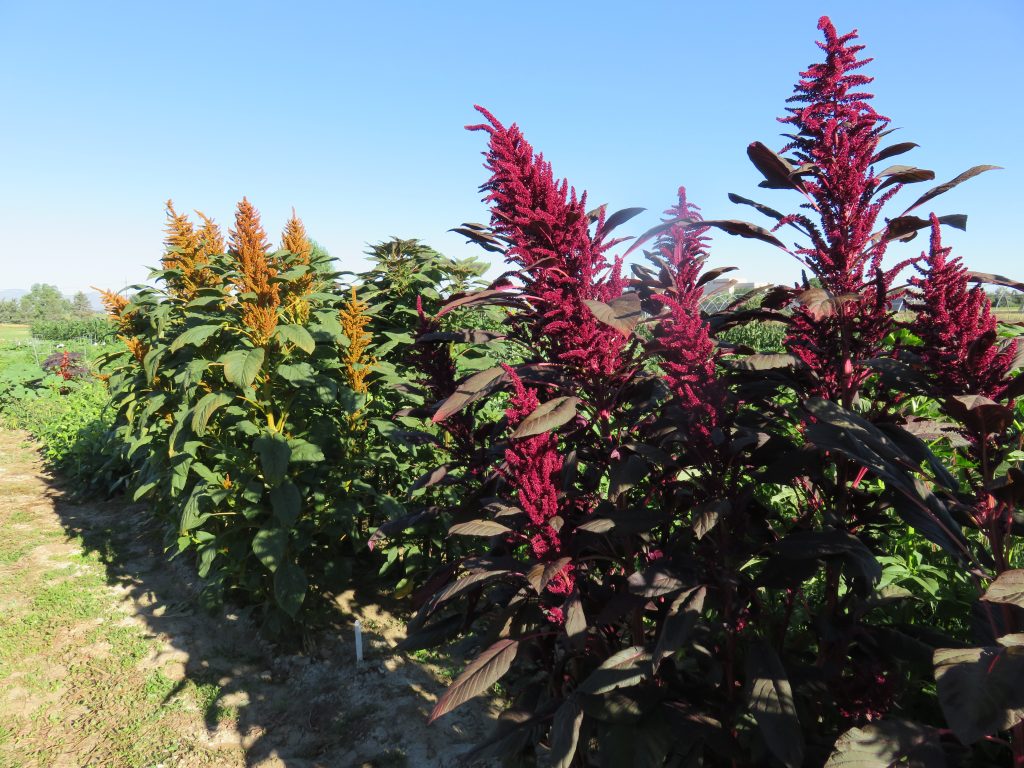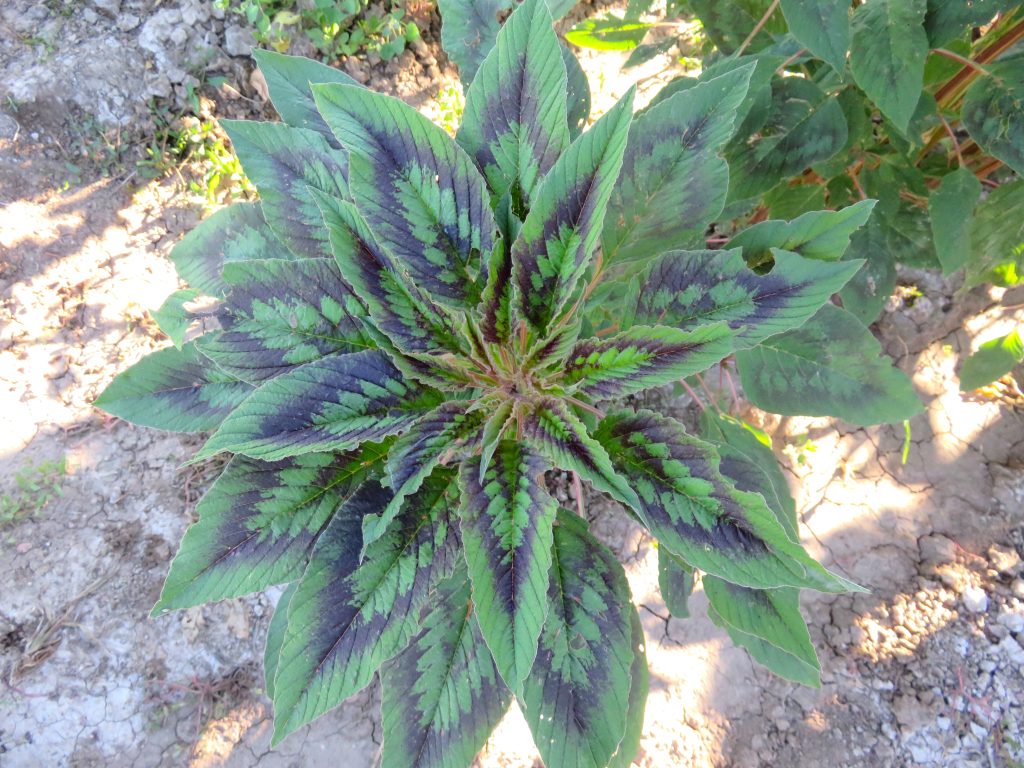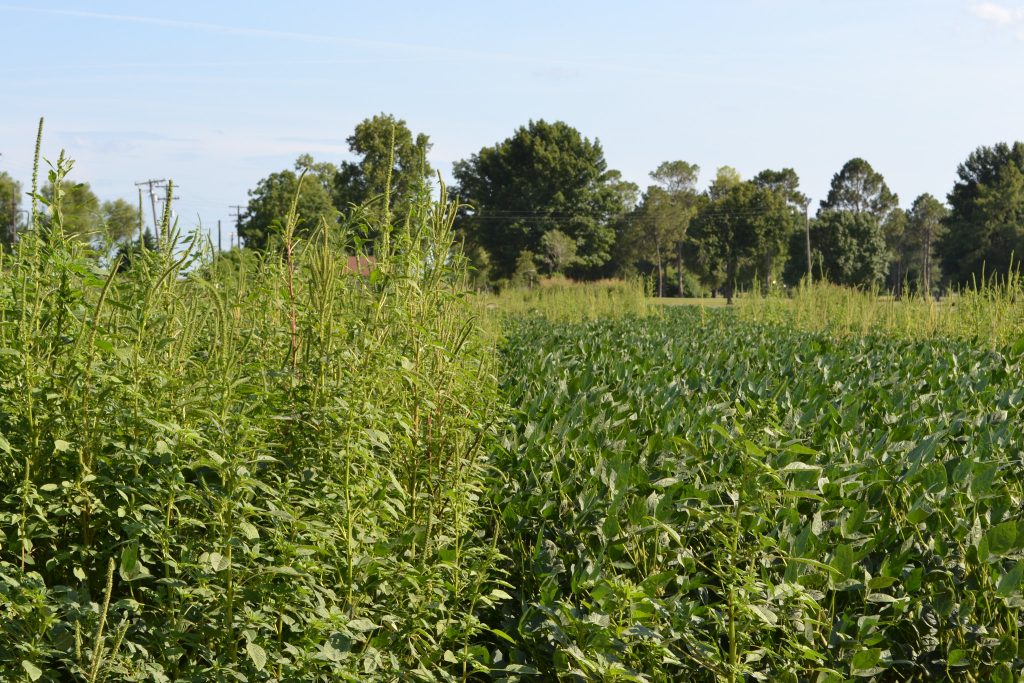Grain Amaranth (Amaranthus spp.)
Patrick Byrne
Colorado State University, Fort Collins, Colorado 80523
Corresponding author: patrick.byrne@colostate.edu
OUTLINE
- Overview
- Domestication and history
- Production and use
- Conservation and breeding
- Weedy relatives
- References
- Chapter information
1. OVERVIEW
Grain amaranth (Amaranthus spp.) is an annual, small-seeded, high-protein pseudocereal native to the Americas. Amaranths have the C4 photosynthetic pathway, similar to maize and sorghum, making them efficient binders of carbon dioxide in photosynthesis, especially under hot, dry conditions. Although the full potential of grain amaranth in the food supply has not yet been achieved, its production is increasing due to its nutritious gluten-free grain and resilience to abiotic stresses.
2. DOMESTICATION AND HISTORY

Three species of amaranth have been domesticated for use as a grain crop: Amaranthus cruentus in Central America, A. hypochondriacus in Mexico, and A. caudatus in the Andean region of South America (Santra et al., 2024). Genomic analysis confirms that A. hybridus is the progenitor of all three species (Clouse et al., 2016). Although similar for culinary applications, the three species have different adaptations. A. cruentus is relatively daylength neutral and is the most widely adapted across different latitudes and soil types (Santra et al., 2024). The other two species are daylength sensitive and flower during short days; they are best adapted to higher elevations in lower latitudes (Santra et al., 2024). Domesticated amaranths have white seeds, whereas their wild relatives are dark-seeded. Grain amaranth was an important food crop for pre-Columbian cultures of the Americas, but was repressed by the Spanish due to its religious significance (Wikipedia, 2024).
3. PRODUCTION AND USE

Amaranth is a versatile and resilient crop that is tolerant to a wide range of weather conditions (Aderibigbe et al., 2022). Amaranth requires less water and fertilizer than conventional cereals like corn, wheat, and rice, and is therefore considered an energy-conserving crop (Santra et al., 2024). Having the C4 photosynthetic pathway, amaranths have a fast growth rate and are well adapted to hot, dry conditions. In addition to being grown for grain, amaranths are used for forage, as a leafy vegetable, and as an ornamental plant, due to the richly pigmented leaves and inflorescences of some variants (Brenner et al., 2000).
Grain amaranths have traditionally been grown in Mexico, the Andean region, and the Himalayan foothills of India and Nepal (Santra et al., 2024). Production is expanding in China, India, Mexico, and East Africa (Santra et al., 2024). U.S. production has been concentrated in the upper Midwest and Great Plains, due partially to dry weather at harvest time, which facilitates mechanical harvest (Santra et al., 2024). India is a major exporter and the source of most of the amaranth grain sold in the U.S. (Santra et al., 2024).
Amaranth grain is a gluten-free product that has become popular among consumers seeking foods without gluten. Its protein content of 14-18% is higher than cereals like wheat or rice, and its amino acid profile is well balanced and especially rich in lysine (Aderibigbe et al., 2022; van Wyk, 2005). The grain is a moderately high source of phosphorus, manganese, and iron (Wikipedia), and it contains an array of bioactive compounds such as phenolic acids with health-promoting properties (Aderibigbe et al. 2022). In addition to the beneficial components, some grain amaranths also contain antinutrient factors such as oxalates and phytates (Aderibigbe et al., 2022).
Amaranth seeds are popped, ground to make flour, eaten as porridge, or incorporated into breakfast cereals. Amaranth flour is used in beverages, weaning foods, and baked products like bread and cookies (Aderibigbe et al., 2022). Alegria is a common sweet in Mexico made from popped amaranth, honey or sugar syrup, and sometimes roasted seeds or nuts (Wikipedia). Santra et al. (2024) explain the cleaning, milling, and fractionation of amaranth grain for a variety of end-uses.
4. CONSERVATION AND BREEDING

Grain amaranths are predominately self-pollinated diploids, though outcrossing rates may range from 3.5% to 34% (Brenner et al., 2000). Most are monecious (male and female flowers on the same plant). The haploid chromosome number (n) for most amaranths is 16 or 17.
According to Das (2016), there are 61 ex situ collections of Amaranthus germplasm around the world. The largest are the U.S. National Plant Germplasm System, the National Bureau of Plant Genetic Resources (India), and collections in China, Peru, and Mexico. Although a high level of diversity is conserved in these genebanks, Joshi et al. (2018) think that there are gaps in these collections for landraces and wild species from regions where grain amaranth is not a major crop. Among the issues faced by genebank managers is identifying duplicate accessions. Suspected duplicates are evaluated in side by side growouts, as demonstrated in the following video.
Important breeding objectives are reduced shattering, shorter plants, increased yield, larger seeds, synchronous maturity, improved taste and nutritive value, and pest resistance (Das, 2016). A number of traits controlled by major genes have been identified, as listed in Brenner et al. (2000). Cytoplasmic male sterility (CMS) is a trait that facilitates production of hybrid cultivars, which typically are more vigorous and higher yielding than conventional varieties. The trait has been identified and characterized in amaranth (Brenner, 2019), but a CMS-based hybrid production system has not been fully implemented. Hybrid breeding would also benefit from the identification of divergent heterotic groups, which when crossed together give rise to a high level of heterosis (Joshi et al., 2018).
The availability of a reference genome sequence for A. hypochondriacus cv. Plainsman (PI 558499) with an approximate size of 500 Mbp (Lightfoot et al., 2017) will facilitate gene discovery, marker development, genomic selection, and genetic diversity research.
5. WEEDY RELATIVES

Of the approximately 70 species in the Amaranthus genus, some are weeds in field crops (Das, 2016). The same properties that make grain amaranth a productive crop (fast growth rate, high seed yield, tolerance to abiotic stresses) also make highly competitive weeds. For example, A. retroflexus (‘pigweed’) is a troublesome annual weed found in much of the U.S. Palmer amaranth (A. palmeri) is an aggressive, fast-growing weed of soybean and cotton crops in the U.S. and has developed resistance to a number of commonly used herbicides (Wikipedia).
6. REFERENCES
Aderibigbe OR, Ezekiel OO, Owolade SO, Korese JK, Sturm B, Hensel O. 2022. Exploring the potentials of underutilized grain amaranth (Amaranthus spp.) along the value chain for food and nutrition security: A review. Critical Reviews in Food Science and Nutrition 62:656-669. DOI: 10.1080/10408398.2020.1825323
Brenner DM. 2019. Registration of DB 199313, cytoplasmic male sterile grain amaranth genetic stock. Journal of Plant Registrations 13:251-253. DOI: 10.3198/jpr2018.06.0042crgs
Brenner DM, Baltensperger DD, Kulakow PA, Lehman JW, Myers RL, et al. 2000. Genetic resources and breeding of Amaranthus. Plant Breeding Reviews 19:227-285. DOI: 10.1002/9780470650172.ch7
Clouse JW, Adhikary D, Page JT, Ramaraj T, Deyholos MK, et al. 2016. The amaranth genome: genome, transcriptome, and physical map assembly. The Plant Genome 9:1-14. DOI: 10.3835/plantgenome2015.07.0062
Das S. 2016. Amaranthus: A promising crop of future. Springer, Singapore.
Joshi DC, Sood S, Hosahatti R, Kant L, Pattanayak A, et al. 2018. From zero to hero: the past, present and future of grain amaranth breeding. Theoretical and Applied Genetics 131:1807-1823. DOI: 10.1007/s00122-018-3138-y
Lightfoot DJ, Jarvis DE, Ramaraj T, Lee R, Jellen EN, Maughan PJ. 2017. Single-molecule sequencing and Hi-C-based proximity-guided assembly of amaranth (Amaranthus hypochondriacus) chromosomes provide insights into genome evolution. BMC Biology 15:74. DOI: 10.1186/s12915-017-0412-4
Santra DK, Schoenlechner R, Brenner DM. 2024. Sustainability, processing, applications and international trade of amaranth grain. In: Sudarshan N, Wanasundara JPD, Scanlin L (Eds.) Sustainable Protein Sources: Advances for a Healthier Tomorrow, 2nd ed. Academic Press. DOI: 10.1016/B978-0-323-91652-3.00022-8
van Wyk E-B. 2005. Food crops of the world. Timber Press, Portland, OR. p. 55.
Wikipedia. 2024. Amaranth. Wikipedia. Accessed 13 February, 2024. Available from: wikipedia.org/wiki/Amaranth
7. CHAPTER INFORMATION
Chapter citation: Byrne P. 2024. Grain Amaranth (Amaranthus spp.). In: Chen K, Byrne P (Eds.) Understudied Indigenous Crops. Fort Collins, Colorado: Colorado State University. Date accessed. Available from https://colostate.pressbooks.pub/understudiedindigenouscrops/chapter/finger-millet/
Chapter editor: Katheryn Chen
Special thanks to USDA amaranth curator, David Brenner, for reviewing this chapter.

